Cover image: Squee, Goblin Nabob by Greg Staples
This article comes from the foothills of Gila National Forest, outside of Silver City, New Mexico. We’ve parked our van on a quiet dirt road that winds its way deeper into the woods. For me, these places provide a sense of clarity, a way to quiet the noise inside my head. But the noise isn’t always internal.
Give people a space on the internet, and they’ll argue about their passions. With Commander fans, we’ve been seeing a large-scale discussion on the direction of the format. Decks are becoming more optimized, choices seem to be narrowing, and old favorite cards are fading from the public eye. But what if I told you that things aren’t as dire as they’re made out to be?
Today, we’re going to talk about suboptimal cards in Commander; what makes them seem inferior, our cognitive biases, and why our decisions don’t matter as much as we think they do.
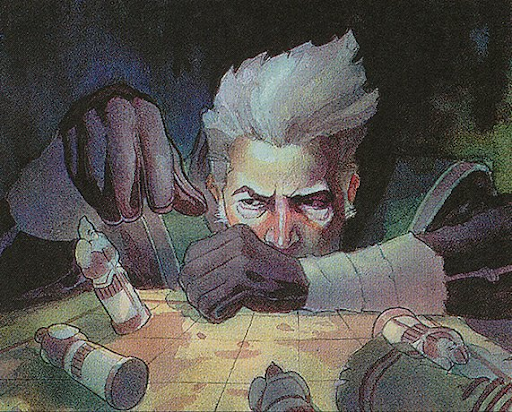
Despondency by D. Alexander Gregory
What Makes a Card Suboptimal?
One of the few constants in life is change, and Magic is no different. As the game grows, we see new cards surpass the old. They might have better stats, a lower casting cost, or some exciting new abilities. Mons’s Goblin Raiders turned into Raging Goblin, which turned into Legion Loyalist. As time rolls on, the framework gets updated to match the environment. These game pieces grow and change alongside us.
Not every card gets a new look and feel, though. Some are considered suboptimal because they don’t shine the way they used to. They haven’t been replaced, but they don’t have the same shine they once did. They sit on the proverbial garage shelf of the format; dusty trophies of a bygone era. Two such examples of this are Phyrexian Arena and Gilded Lotus. The format has sped up in such a way that slow, incremental draw isn’t as useful as it once was. Gilded Lotus, on the other hand, represents a costly and fragile investment in a world of Arcane Signet, Dockside Extortionist, and Smothering Tithe. These cards once shaped our deckbuilding in the Second Era of Commander, but have mostly stayed there.
Once a card is deemed suboptimal, it’s hard for it to rise out of that place. Some never do. Fervent Charge sat in bulk bins for the better part of two decades, only to catapult back into the format thanks to Isshin, Two Heavens as One. Commander has a way of pulling old cards out of the darker reaches of unplayability. I’m still waiting for One With Nothing to shine, but that’s easier said than done.
The difference between the optimal choice and second best can vary wildly. In some cases, you have a situation where Migration Path is strictly better than Explosive Vegetation. However other decisions aren’t as easy. Farewell is mostly better than Austere Command, but not always. That’s where our discussion lies. That gap isn’t as wide as we think.
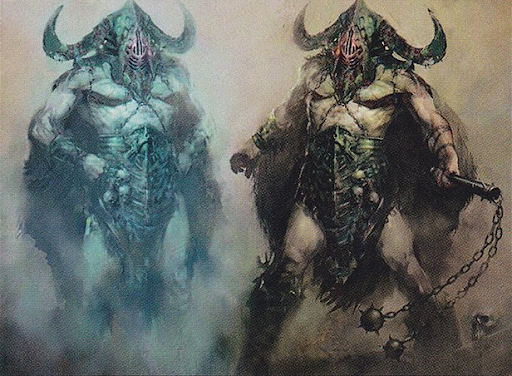
Phantasmal Image by Nils Hamm
Frequency Illusion
A few months ago, I took a liking to Jeep Wranglers. After van life, my wife and I are going to settle down in a remote, snowy area, the kind where a Wrangler would thrive. I started seeing them everywhere on the road. “Were there always this many out there? Or was I just tuning them out before?” I’d ask myself.
Frequency illusion, sometimes referred to as “Baader-Meinhof Phenomenon,” is a cognitive bias. It refers to when we notice something for the first time, that there’s a likelihood of noticing it more frequently, leading us to think that something is happening more frequently than it actually is. This can happen with anything from Jeeps to mana rocks.
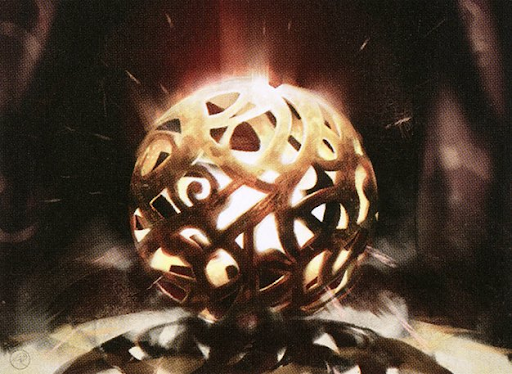
Commander’s Sphere by Ryan Alexander Lee
A common talking point is the rumored death of three-drop mana rocks. Commander’s Sphere and Chromatic Lantern are thrust into the public eye, suffering an alleged death at the hands of cheaper options. Frequency illusion can tell us “There sure are a lot more two-mana rocks going around right now,” or “I really don’t see Commander’s Sphere anymore.”
As soon as the thought enters our head, it’s easy to lose sight of evidence to the contrary. But if we look into the data, three-drop mana rocks still see play in plenty of decks. Commander’s Sphere is commonly found in preconstructed decks, so it’s there for a lot of Commander players to begin their journey. Chromatic Lantern is still in 10% of the decks on EDHrec, and isn’t far behind Thought Vessel (slotting in at 15%).
Frequency illusion is a pervasive trap to find yourself in. But by recognizing that it’s happening, you can get some much needed clarity on your decisions.
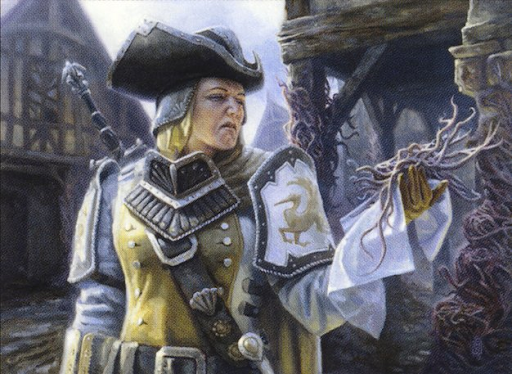
Thraben Inspector by Matt Stewart
Confirmation Bias
So you’ve made some recent changes to your deck, and now it’s time to test it out. You draw into that new card, and the feeling of excitement comes over you. This is what you’ve been waiting for; the chance to do what the older card couldn’t. You make the play, crack a smile, and move on with the game. You had to have made the correct decision, right?
Confirmation bias is the tendency to look for or recall information that already supports your views. In this case, is that suboptimal card really as bad as you think it is?
Say you’ve cut a land for a spicy five-drop that’s on theme for your deck. You find yourself in a situation where you draw into that five-drop, and it helps you win the game. It feels great, and you’re thankful that you’ve made that choice. When going back through your deck, it’s easier to remember the game you won with the spicy tech, than it is to remember all the times it was a dead card.
The decision to cut that land might have caused you to mulligan an opener because you didn’t have enough lands, or it could’ve caused you to lose your footing after missing a land drop mid-game. But the taste of victory is ever so sweet, so that memory shines brighter than the less exciting ones. That’s confirmation bias in action, tricking the brain into supporting an otherwise unwise choice.
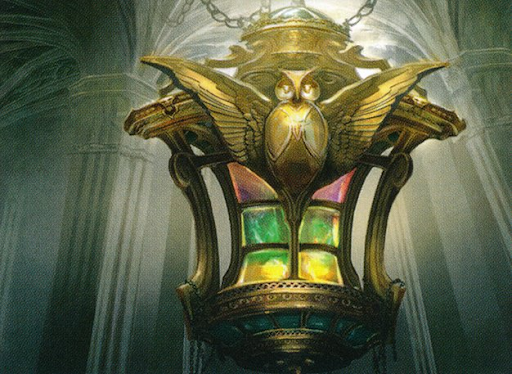
Chromatic Lantern by Jung Park
It’s important to keep confirmation bias in mind when making decisions. When thinking about a card you’re considering cutting, or one you just added, consider how many times it actually gets played. With Commander decks being 100-card singleton, it may take several games to draw into the card in question. Not to mention the fact that game states are wildly different, with varying power levels and opponents. Playing said card might be highly effective in one game, but it could be a dud in other situations. When you get down to it, you may find yourself making decisions on a card after seeing it only two or three times. Is that enough to truly tell if it made a difference?
Statisticians commonly say that you need at least 30 samples before you can get an accurate read of what’s going on in a data set. Of course, the more samples the better, but your accuracy depends on how much time and effort you put into your analysis. With how varied Magic games are, it’s hardly possible to get scientific with this. No one is recording 30-50 games to decide between Reclamation Sage and Caustic Caterpillar.
Despite our graphs and format data, we can’t truly get scientific with our card choices. Magic has far too much variance to produce the analysis that other games can use, such as chess or poker. But for our singleton world, a lot of it comes down to our own gut feelings. We use our experience to guide our choices more than anything else.
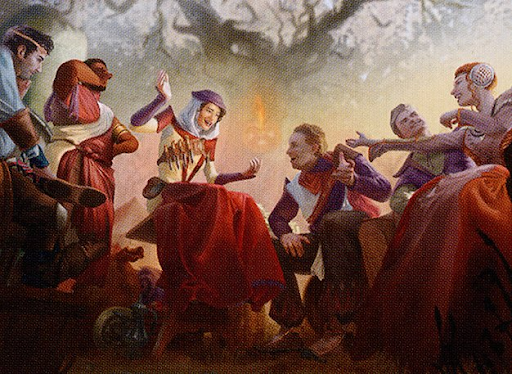
Outlaws’ Merriment by Suzanne Helmigh
The Most Important Reason of All
Our choices can be influenced by a variety of things, whether they be cognitive biases, card availability, or even if the art is unsettling to look at. But there is one reason that is more important than all, when it comes to Commander.
Life is too short and unpredictable to not play the cards you love. Play a suboptimal card if you want to, even if someone tells you it sucks.
You can do whatever you want in this format. You can build a combo deck to win on the first few turns, or you can build around ladies looking to the left. There’s a wide world of things to do in Commander, and you shouldn’t be hampered by thoughts of one thing being slightly less optimal than the next. In a long-enough timeline, the differences in two cards will show through. But who has the time to truly measure that out? What matters more is that you enjoy the things that you’re doing, regardless of if they cost you a fraction of a percentage point.
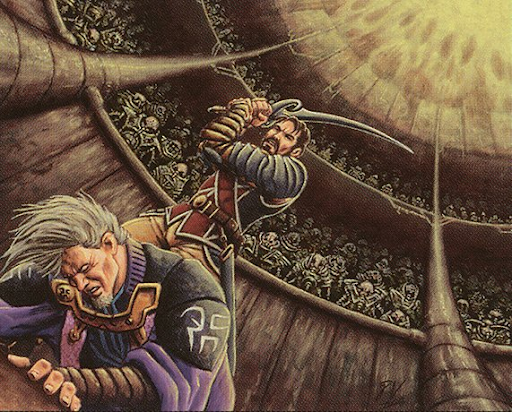
Phyrexian Arena by Pete Venters
Earlier I mentioned that Phyrexian Arena and Gilded Lotus are two examples of relics of a bygone era. Does that mean I don’t play them anymore? Hell no, those cards rule. Both see play in my Gonti, Lord of Luxury deck, for a variety of reasons.
One of those reasons is that I have a Chinese version of Phyrexian Arena signed by Pete Venters. I also love the art of noted eugenicist and villain, Urza, about to get a Mortal Kombat fatality in front of a bunch of Phyrexians that look like The Predator. Gilded Lotus serves as a way of getting colored mana in the monoblack deck, so I can activate the abilities of cards I “borrow”, like Zacama, Primal Calamity.
There are probably better cards to fit in those slots, but the difference in gameplay isn’t big enough to dwell on the decision.
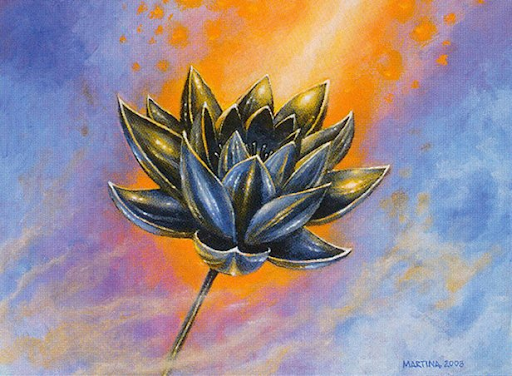
Gilded Lotus by Martina Pilcerova
Live with the Chaos; Love the Chaos
Enjoying the cards you play is important. If the optimal choice doesn’t elicit the same reaction from deep inside you, then you don’t have to keep playing it. For all the talk about format speed, playing on curve, and homogenization, we’re still playing games that might be won by having a fish token swinging a Sword of Feast and Famine. We’re much, much different than other formats. We’re not the Arena hivemind, churning through thousands of games to determine the best 60-card Red aggro deck for the ladder. We’re making mostly unscientific, emotional, experienced-based decisions on what we play. It’s okay to recognize that.
Buy the 50-cent foil of your favorite bad card, and sleeve it up. It may not be the best at what it’s doing, but it will be the thing that keeps you coming back for more.
Travis is a writer and photographer from the Hudson Valley in New York. He’s currently traveling the US with his wife and dog, living full-time out of a converted camper van. He has loved Magic since Starter 1999, but he champions having a healthy mental and financial relationship with the game. When not playing games, he enjoys cycling, tea, and dog parks. You can follow his exploits here on Twitter and Instagram.

